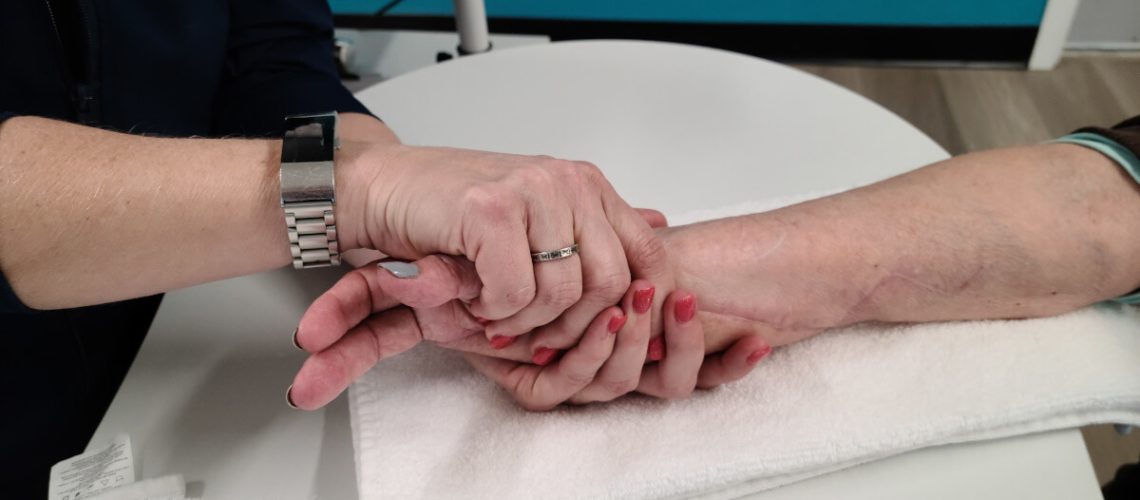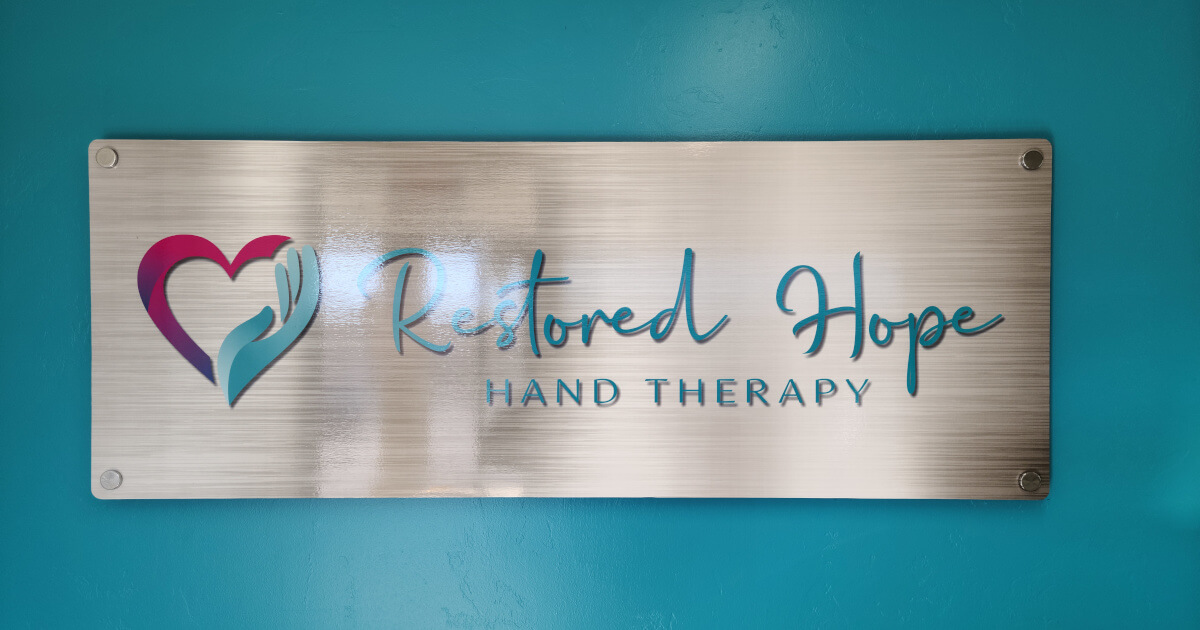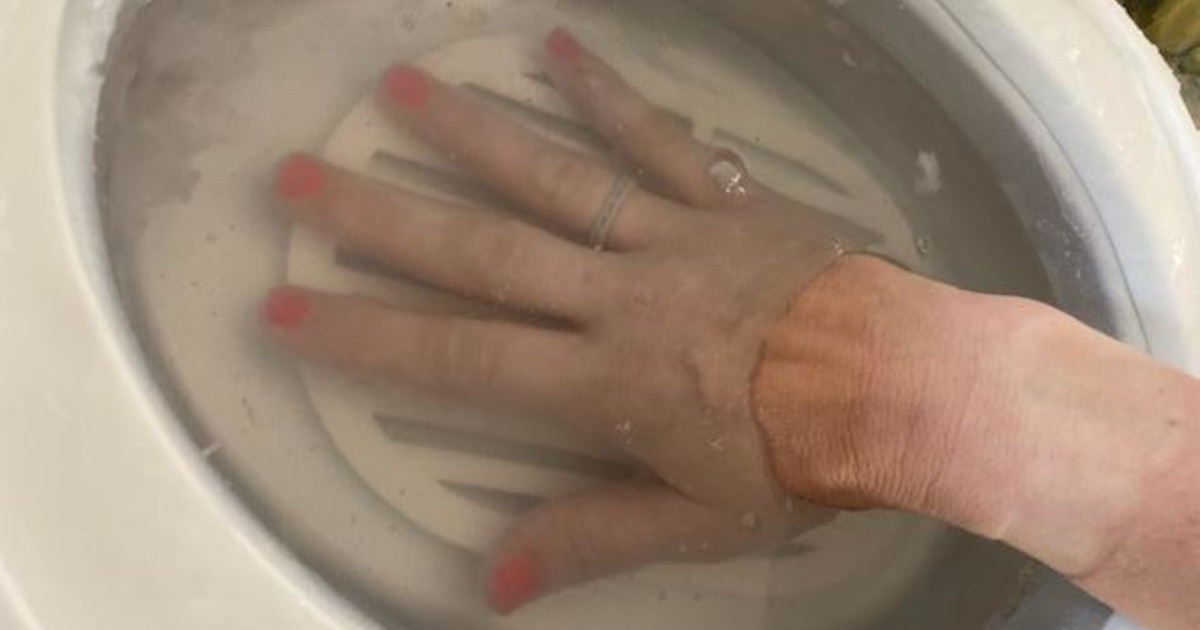

Taméra Ford, OTR/L
What Does a Hand Therapist Do & Treat
Hand therapists are key in rehab for those with hand issues or conditions. With knowledge of anatomy, physiology, and biomechanics, they use their skills to improve hand function and reduce pain. From fractures to tendonitis, arthritis, or nerve damage, they have techniques like exercises, splinting, manual therapy, and modalities to restore optimal hand function.
They also teach self-care and prevention strategies to stop reinjury. Don’t miss out. Hand therapists can be your Sherlock Holmes, unlocking finger mysteries and hand secrets on the way to recovery and improved hand function.
What is a Hand Therapist?
A hand therapist is key in aiding individuals to regain use and movement in their hands. From injuries, chronic issues or pre-surgery, these experts are trained to supply total care and treatment. Working closely with patients, customized plans are set up, which could include exercises, manipulation, splinting and other interventions to improve strength, flexibility, range of motion and overall hand function. Hand therapists also inform patients on self-management techniques and keep supporting them throughout the rehab process.
Additionally, hand therapists also look into psychological and emotional aspects of hand issues or injuries. They understand how losing hand function affects someone’s quality of life and help people adjust to their situation. This can involve counseling, stress management methods and giving information to help patients manage any emotions they experience.
Moreover, hand therapists join up with other health care professionals like orthopedic surgeons or neurologists to give treatment for their patients. By keeping communication open and swapping info on each patient’s status and needs, they can make the best outcomes and help people reach their goals.
For those who want relief from common conditions like arthritis or carpal tunnel syndrome, hand therapists at Restored Hope Hand Therapy can provide valuable advice on pain management. This might include suggesting exercises or stretches to reduce discomfort and teaching the right ergonomic techniques to lessen strain on the hands during daily activities. They also have special knowledge in making custom splints or orthotics for each patient’s one-of-a-kind needs. These devices can give support, protect joints from further damage and help healing.
Responsibilities of a Hand Therapist
To effectively fulfill the responsibilities of a hand therapist, they need to understand the importance of assessing and diagnosing hand conditions, creating individualized treatment plans, implementing therapeutic interventions, and providing patient education. These sub-sections are crucial in delivering comprehensive care that helps patients regain functionality and improve their quality of life.
Creating Individualized Treatment Plans
Hand therapists must create individualized treatment plans to meet the needs of each patient. This includes assessing medical history, range of motion, strength, and sensation in the affected hand. Goals are established with the patient based on the assessment. At Restored Hope Hand Therapy, creating individualized treatment plans are an important component to enhancing the quality of your life.
Tailored interventions may include: exercises, manual therapy, splinting, pain management, joint protection techniques, and activity training. Progress is regularly evaluated and adjustments are made to the treatment plan as needed. Patient education is also important, empowering them to take an active role in their recovery.
Moreover, hand therapists at Restored Hope will consider individual factors such as age, occupation, lifestyle demands, and personal goals when creating treatment plans. To further enhance the effectiveness of the plans, open communication with the patient, adjusting goals, utilizing innovative tools, and collaborating with healthcare professionals should be implemented.
Implementing Therapeutic Interventions
Hand therapists have a huge responsibility of providing therapeutic interventions. They are vital to helping people with hand injuries or disorders recover. With special skills, knowledge, and techniques, therapeutic interventions can be implemented to help healing and improve how hands function.
Steps for implementing therapeutic interventions:
- Assess the patient: Check range of motion, strength, pain levels, and any functional limitations. This provides info for creating a treatment plan.
- Set goals: Establish short-term and long-term goals with the patient. These should match their desired results, such as reducing pain, improving grip, or regaining dexterity.
- Develop a treatment plan: Put together an individual plan that includes manual therapy, exercises, modalities, splinting, and ergonomic modifications.
- Implement interventions: Carry out the plan by doing manual techniques and guiding patients through activities to heal and enhance function.
- Monitor progress: Monitor the patient’s rehabilitation journey and re-assess regularly to see if interventions are effective or if adjustments need to be made.
By following these guidelines and providing individualized care, hand therapists can make a big difference in how hands work and the patient’s quality of life.
Pro Tip: Communication is key for successful therapeutic interventions. Have a strong rapport with your hand therapist to make sure you feel heard and supported.
Providing Patient Education
A hand therapist’s task is to educate patients about their condition and treatment options. It includes:
- Explaining the diagnosis in simple terms.
- Informing patients about available treatments, including exercises, manual therapy, and modalities.
- Teaching patients’ self-care techniques for home use.
- Advising on preventive measures to minimize the risk of re-injury.
In addition, a hand therapist must inform patients about follow-up sessions and potential risks. Such knowledge helps individuals take an active role in their recovery journey.
Common Conditions Treated at Restored Hope Hand Therapy
To effectively treat common hand conditions, such as carpal tunnel syndrome, fractures and dislocations, tendon and ligament injuries, and arthritis, we at Restored Hope can employ various techniques. By understanding the unique challenges presented by each condition, we can tailor our approach and implement appropriate treatments to promote healing, restore dexterity, and alleviate pain.
Carpal Tunnel Syndrome
Carpal Tunnel Syndrome has causes, symptoms, and treatment options. Causes include repetitive motions. Symptoms include pain, discomfort, numbness, tingling, and weakness in hand grip. Treatment options include rest, modification of activities, wrist splints/braces, medications, and physical therapy exercises.
Additionally, it’s noteworthy that pregnancy, diabetes, obesity, and certain medical conditions can aggravate Carpal Tunnel Syndrome. Early diagnosis and intervention are essential to manage this successfully.
If you have any of the mentioned symptoms, or think you may have Carpal Tunnel Syndrome, it’s better to talk to a hand therapist soon. Ignoring it could lead to more severe issues and limit your daily activities.
Fractures and Dislocations
Fractures and dislocations can be debilitating injuries, but we are here to help! Fractures occur when a bone is broken or cracked due to trauma or repetitive stress. We assess the fracture and create a custom treatment plan that may include splinting, immobilization, and exercises.
Dislocations happen when the bones in a joint are forced out of position. A hand therapist at Restored Hope can reduce the dislocation by carefully pushing them back into place. Then, we can provide rehabilitation to restore strength, range of motion, and stability.
Finger fractures and elbow dislocations are just a few of the injuries we treat. We work closely with orthopedic surgeons and other healthcare professionals to ensure comprehensive care for patients.
If you have a fracture or dislocation, make sure to seek expert care from Restored Hope. Don’t let these injuries keep you from living life to the fullest. Take control of your healing journey today!
Tendon and Ligament Injuries
We often see different types of tendon and ligament injuries. These include:
- Tendinitis
- Tendon Tears
- Ligament Sprains
- Tendonitis
To treat these, we use splints, braces, taping methods, and therapeutic exercises, as well as modalities such as ultrasound and electrical stimulation.
It is important to seek professional guidance from a hand therapist early on. This can prevent further damage and help with recovery. Through personalized treatment plans, individuals have the chance to regain optimal function and return to their day-to-day activities.
Arthritis
Hand therapists at RHHT provide exercises to improve joint movement and strengthen muscles around the affected joints. These exercises help reduce pain and increase flexibility. We also design custom-made splints that offer optimal support while enabling functional use of the hand.
Pain management techniques like ultrasound therapy, cold or heat therapy, and manual therapy are used to alleviate pain caused by arthritis. We also advise patients on joint protection techniques and adaptive strategies to reduce stress on arthritic joints during daily activities.
Moreover, we craft personalized treatment plans for each individual’s needs with their goals in mind. Additionally, we provide emotional support to those struggling with the chronic condition. Offering empathy and understanding, we create a secure atmosphere for people to voice their worries and frustrations about living with arthritis.
If you or someone you know is showing signs of arthritis, don’t wait to get help from a hand therapist at Restored Hope Hand Therapy. Thanks to our expertise, we can help you achieve improved quality of life by managing pain, increasing mobility, and restoring function in your hands. Make the most of the opportunity for better hand health – act now!
Other Conditions Treated at RHHT
- Trigger Finger
- Sprains and Strains
- Dupuytren’s Contracture
- Tendinitis of the Thumb (De Quervain’s Tendinitis)
- Wrist Sprain
- Mallet Finger
- Ganglion Cyst
- Tendon Transfer Neuro Re-Education
If you are currently experiencing any of these conditions or experiencing any other pain from your shoulder to your fingertips, please call (928) 275-2201.
Techniques and Modalities Used
To enhance your recovery, we use various techniques and modalities. Range of motion exercises, strengthening exercises, manual therapy techniques, splinting and casting, along with modalities such as heat and cold therapy, are employed to address your specific hand-related issues and promote healing.
Range of Motion Exercises
Range of motion exercises are must-haves for hand therapy! These exercises help boost joint flexibility and mobility. They include:
- Passive range of motion: the therapist moves the patient’s joints without any effort from the patient to maintain or regain joint mobility.
- Active assistive range of motion: the patient uses their muscles with help from the therapist. This helps strengthen weak muscles and coordination.
- Active range of motion: the patient moves their joints on their own, aiming to improve muscle strength and endurance.
Plus, we use stretching, mobilizations, and manual therapy (e.g. massage, myofascial release, and trigger point therapy) to enhance joint mobility. It’s important to follow guidelines set by your therapist though. Each exercise should be comfortable and proper form and technique are key.
At Restored Hope, we follow evidence-based practice guidelines from organizations like the American Society of Hand Therapists (ASHT). This ensures high-quality care and successful outcomes. So, trust your hand therapist and use range of motion exercises to give your fingers a workout!
Strengthening Exercises
At Restored Hope, we use resistance training to help strengthen the muscles of the hand and fingers. This includes using items like dumbbells or resistance bands. Functional activities can also improve dexterity and coordination. Isometric exercises are used too – these involve contracting muscles without joint movement.
To optimize the effectiveness of strengthening exercises, we suggest maintaining proper form. Also, gradually increasing the intensity or resistance is important. Patients should listen to their bodies and not overexert themselves – rest between workouts is key.
By combining technical expertise with individualized care, hand therapists at Restored Hope Hand Therapy help patients tailor treatment to their needs & goals. With consistent effort, individuals can regain strength, restore functionality, and improve quality of life.
Manual Therapy Techniques
Manual therapy techniques are paramount in hand therapy, helping individuals with hand injuries or conditions to heal and rehabilitate. These techniques involve manual manipulation and mobilization of the area to improve function and reduce pain.
- Soft tissue mobilization: Hand therapists use massage and stretching to relax muscles, reduce tension, and improve joint mobility. This boosts circulation, aids healing, and reduces inflammation.
- Joint mobilization: Hand therapists apply gentle pressure and movement to certain joints to increase range of motion, reduce stiffness, and restore normal joint function. This helps patients recover strength and dexterity.
- Scar management: Through massaging the scar tissue, these therapists reduce scar tissue formation, promote optimal healing, and prevent adhesions that may limit movement.
- Traction: Hand therapists use traction techniques to gently pull or stretch the affected joints or soft tissues. This relieves pain, decompresses nerves, and increases joint space for improved mobility.
In addition, we often combine other modalities with manual therapy. These could include: heat/cold therapy, electrotherapy (like ultrasound or electrical stimulation), splinting, exercise plans, and education on ergonomics or adaptive devices.
Hand therapists at Restored Hope Hand Therapy have expertise in manual therapy techniques, anatomy and physiology, and various hand conditions. We create individualized treatment plans, utilizing evidence-based practices.
If you’re in need of rehabilitation for your hand, seek out a hand therapist at Restored Hope. Don’t miss out on personalized care from these professionals who can help you regain full functionality of your hands. Splinting and casting can ease your pain and mold your hand into a masterpiece.
Splinting and Casting
Splinting and casting are essential tools, as they are used to promote healing and provide support to injured hands and wrists. Braces, splints, and casts are applied to the affected area. Here’s a 5 step guide to understanding the process:
- Assessment: First, we assess the nature and severity of the injury. We check range of motion, strength, and stability.
- Material Selection: We then pick the right materials for the splint/cast, like thermoplastic, fiberglass, or prefabricated splints.
- Customization: The selected material is then shaped to fit the patient’s unique needs. It’s tailored to provide optimal support and immobilization.
- Application: The splint or cast is applied with proper alignment techniques. It’s important to get the positioning right for effective healing.
- Monitoring & Adjustment: We monitor patients throughout their treatment journey. We make adjustments when needed, e.g. to account for swelling, pain, or improvement.
Modalities such as Heat and Cold Therapy
Hand Therapy is a commonly used modality for treating various conditions. Heat Therapy and Cold Therapy are two popular techniques. Heat Therapy involves applying heat pads or warm compresses to hands to improve blood flow, relax muscles and reduce pain. Cold Therapy involves using cold packs or ice packs to reduce swelling and inflammation. Contrast Therapy combines both heat and cold to increase circulation and lessen pain. Paraffin Wax Therapy involves immersing the hands in melted wax to moisturize skin and reduce pain.
Other methods may also be used, such as electrical stimulation, ultrasound therapy, laser therapy or compression therapy. These depend on the specific condition being treated. For successful treatment, proper assessment must be conducted, patients should be educated on homecare and progress should be monitored. Treatment plans should also be individualized for each patient.
The Importance of Hand Therapy in Rehabilitation
Hand therapy is vital for rehabilitation, and a hand therapist is an essential form of medical care. They specialize in treating hand & wrist, arm & elbow, and shoulder conditions. With their knowledge and expertise, they help patients gain strength, mobility, and function.
It can increase daily activity and quality of life. Through exercises, stretches, manual techniques, splinting, and modalities like ultrasound or electrical stimulation, we work with patients to maximize healing potential. We also educate about self-care and assistive devices.
Hand therapy isn’t just physical. It addresses the psychological too. It offers emotional support, encouragement, motivation, and guidance. This creates a supportive environment that boosts healing and adaptation.
This type of therapy goes beyond conventional approaches by providing personalized and effective treatments. Certified and licensed hand therapists ensure optimal recovery and functional improvement.
If you or someone you know is experiencing a hand injury or condition, consider seeing a qualified hand therapist. Start the journey to regaining strength, dexterity, and hand function today! Don’t let your hands limit you any further! Call Restored Hope Hand Therapy at (928) 275-2201.




